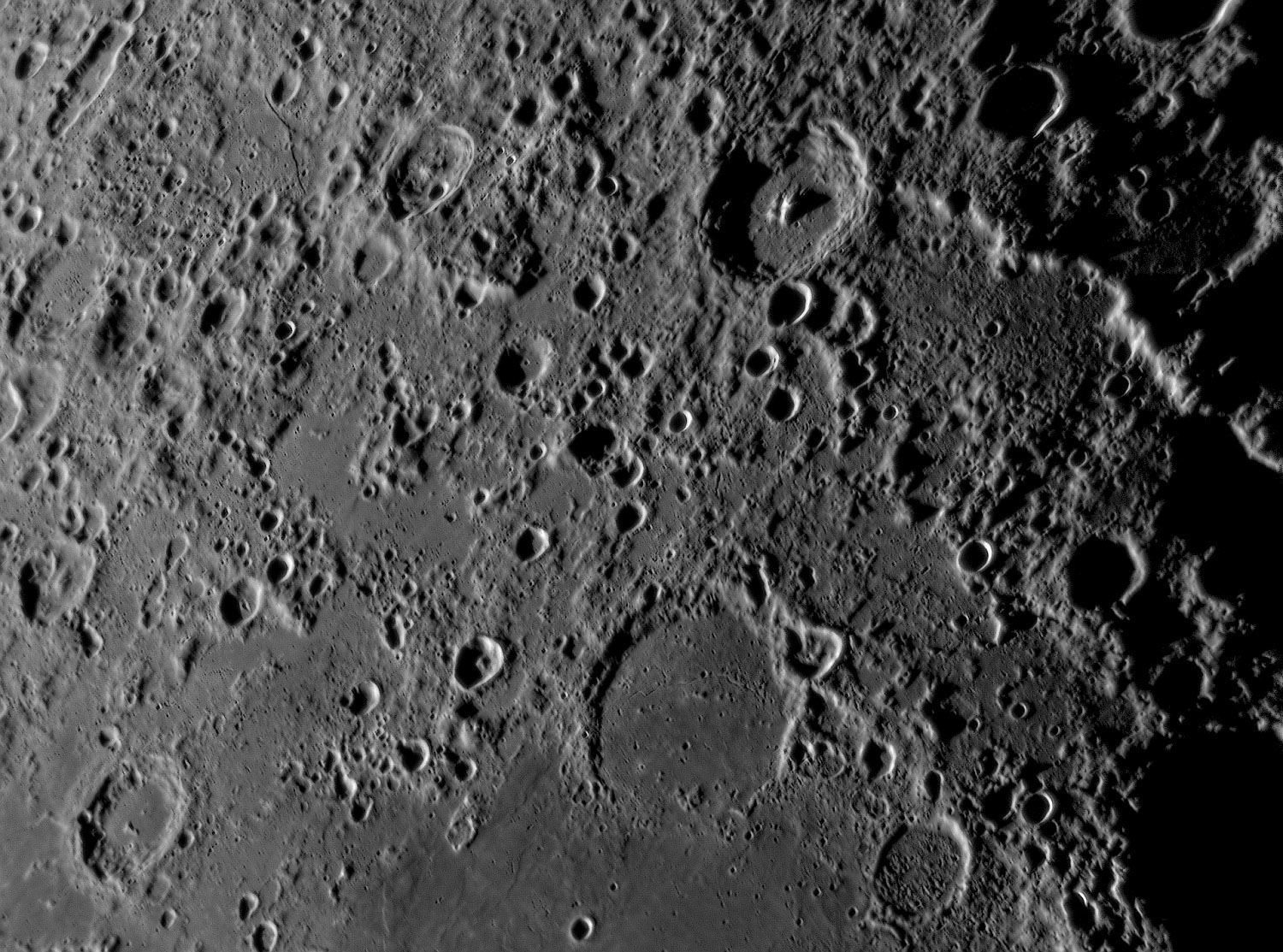March 26, 2014
The Little Things Also Count

south up image by Michael Wirths, Baja California, Mexico
I just came home late from giving my 4th talk in an astronomy series I am presenting at the local library. I was going to find a previous LPOD and reuse it. But I made the mistake of looking at the email that had come in the last 3 hours and discovered Mike's latest from the high peaks of Baja California, and just had to describe it. A quick glance across the image shows the complex rilles at the bend in the floor of Fracastorius (1000 m drop off - check QuickMap), the Neander Fault near top left, and Rheita E, the miniature Schiller at extreme top right. But then my eye more slowly caressed the scene, finding new details to enjoy. Between the Neander Fault and Fracastorius is a very obvious low plain with very few impact craters. A similar smaller, smooth plain is between the first one and Santbech (lower left). Don Wilhelms, the master US Geological Survey mapper, proposed that many of the 20-30 km wide craters here were secondaries from the formation of the Imbrium Basin, Because these smooth plains are not as cratered as the surrounding terrain it suggests that they might not be fluidized Imbrium ejecta but conceivably could be some sort of non-mare volcanism. But there is as yet little evidence for such volcanism, so most lunar scientists would favor the ejecta interpretation. High Sun lighting does show some odd craters in the smooth plains that may be dark halo craters, so the plains may be mare lavas veneered with light-hued ejecta. Another anomalous feature is Beaumont, the miniature Fracastorius near bottom right. Its floor is topographically agitated with small hills and some craters, perhaps secondaries from Theophilus. Finally, Mike's image has captured some faint roughly east-west lineations northwest of Piccolomini. These are crater chains that are not quite radial to Piccolomini, and they are not quite parallel to the Abulfeda Crater Chain. They appear to be secondary crater chains, but is the primary Piccolomini or Imbrium?
Chuck Wood
Technical Details
18" Starmaster dob and a PGR Grasshopper 3 camera.
Related Links
21st Century Atlas chart 6.
Mike's bed and breakfast astronomy website
Yesterday's LPOD: A Snake with Two Heads
Tomorrow's LPOD: Faster Than a Speeding Asteroid?
COMMENTS?
Register, Log in, and join in the comments.



